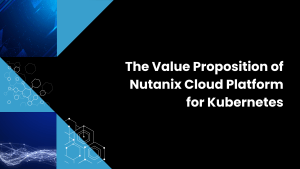Premise
Hybrid clouds are a necessary step for enterprises that are evolving toward more complex multiclouds to address an evolving range of requirements. Choosing the right hybrid-cloud solution is a key step on that journey.
Analysis
Monolithic application environments have become more of an exception than the rule in enterprise IT architectures. Increasingly, developers find themselves challenged to build applications that span hybrid cloud environments. What this means in practice is that application modernization must orient itself toward building robust hybrid clouds that support robust any-to-end interoperability with strong security, governance, and manageability built in
Modernizing Apps In the Age of the Hybrid Cloud
Hybrid applications are becoming the norm rather than the exception. These complex applications often run over hybrid clouds of considerable complexity, with on-premises platforms a necessary anchor.
Hybrid clouds coalesce around the imperatives of data gravity. To the extent that data must remain within the enterprise data center—due to security, compliance, control, availability, and other business requirements—applications will tend to gravitate around it in private clouds. The consequence is that many enterprises will be more inclined to refactor older, on-premises applications around cloud-native applications—such as Docker and Kubernetes—than to lift and shift them, as well as associated data stores, to public cloud services.
Bear in mind, though, on-premises data gravity is not immutable. As enterprises move more of their data outside their firewalls–perhaps to improve service levels and share the data more openly with customers and other stakeholders–application development will very likely shift toward public clouds. Over the coming decade, the following trends are likely to diminish the role of on-premises IT assets in hybrid clouds:
- Strategic business emphasis on AI-driven applications will encourage more greenfield development in public cloud services—such as AWS, Microsoft Azure, and Google Cloud Platform—thereby shifting more data gravity off premises.
- Networking innovations—such as 5G–are reducing latency advantages that on-premises networks have traditionally enjoyed with respect to public clouds.
- Economic advantages—such as pay-as-you-go subscription models– are encouraging more users to create data in SaaS and other public cloud environments, thereby lessening the need to move or migrate from on-premises environments.
- Regulatory sensitivities—such as privacy protection–that have historically called for on-premises data deployments are being addressed effectively in maturing public cloud options.
- End-to-end edge management is growing so complex that enterprises are offloading this responsibility to strategic public cloud partners.
- Digital transformation initiatives are so comprehensive that more enterprises are beginning to explore leveraging strategic cloud partners’ offerings in this regard.
Google Announces A Forthcoming Hybrid Cloud Solution
Nevertheless, on-premises data gravity is still widespread, and acts as a countervailing force that keeps the growth of public clouds from skyrocketing even further.
Recognizing that imperative, public cloud providers have in the past year been beefing up their support for hybrid clouds, while also rolling out a wide range of deployment, development, and management tools. Check out my recent analysis of what AWS, Microsoft, IBM, and others have been doing in that regard, as well as David Floyer’s discussion in this recent Wikibon research note. Most of these solution providers are making networking, data, orchestration, control, and other cross-cutting infrastructure tooling and services the lynchpins of their hybrid-cloud go-to-market strategies. Delivering a consistent “true private cloud” experience in a hybrid-cloud context is what they’re all aiming at.
Google has recently entered the hybrid-cloud solutions market with the announcement of Google Cloud Platform’s beta of its Cloud Services Platform. Originally previewed at Google Cloud Next 2018, Cloud Services Platform—an on-premises, software-based offering–provides a comprehensive framework for development, configuration, management and control of hybrid clouds as well as the data and applications that span them.
Lacking legacy on-premises solutions of its own, Google is at a bit of a competitive disadvantage relative to the above-cited rivals in the hybrid cloud market. Nevertheless, its newly announced Google Cloud Services Platform is quite credible for helping customers link their linking its public cloud to customers’ on-premises IT assets. It shows that Google is finally taking the enterprise seriously.
Google Cloud Services Platform is a software-based solution for which the vendor has not yet announced a general availability date. The solution’s current beta has the following features:
- Integration: Google Cloud Services Platform connects Google Cloud Platform (GCP)-based cloud-native applications with the IT assets and apps that enterprises have deployed on existing on-premise networks, enabling integration with existing networking, storage, and identity capabilities, and supporting movement of these assets across the multicloud as needed. Enterprises can build an on-premises duplicate of their GCP deployments on Kubernetes containers. They can build, test, and deploy cloud-native apps on-premises and then move parts or all of them to the public Google cloud.
- Networking: The solution connects GCP with on-premises environments and other clouds through a managed Istio 1.0 service mesh, providing agile service discovery, intelligent traffic management, proxy services, and API Management.
- DevOps: The solution orchestrates containerized microservices across clouds using an on-premises deployment of Google Kubernetes Engine (GKE). It includes the GKE Serverless add-on and Knative for stateless functions-as-a-service over Kubernetes multicloud backplanes. It incorporates Cloud Build, a fully managed continuous integration/continuous deployment platform. And it includes GCP Marketplace, which streamlines access to diverse enterprise-ready, open-source, and commercial Kubernetes applicationsthat feature prebuilt deployment templates, simple licensing, and consolidated billing.
- Control: The solution provides a single centralized management console spanning on-premises and the public cloud IT assets, apps, and workloads. It includes GKE Policy Management to control enterprise workloads. It also include CSP Config Management for creation of multi-cluster policies that set and enforce establish trust, encrypt traffic, enforce role-based access controls, set resource quotas, block unapproved changes, and create namespaces. And it includes Stackdriver Service Monitoring for service-level operational visibility and control.
How Google’s Hybrid Cloud Solution Stacks Up Against the Competition
The closest rivals to Google Cloud Services Platform are Microsoft Azure Stack, IBM Cloud Private, Oracle Cloud At Customer, and AWS Outposts.
The rival solutions are all similar in that they all provide enterprises with fully managed solutions that run containerized public cloud workloads on on-premises platforms within the customers’ data centers. They are all engineered to enable integration between those vendors’ respective public clouds and various on-premises IT platforms and applications. They all provide the requisite networking, storage, orchestration, workload management, security, and other tools that are necessary for doing that over both tightly and loosely coupled environments. And they all enable centralized control over movement of data, apps, and workloads between on-premises platform and the vendors’ respective public clouds.
Unlike its rivals, Google’s hybrid-cloud offering is a software stack only, rather than a system that integrates software with specialized appliance hardware. Google designed it so that customers can use their existing hardware when possible, although it must be deployed on top of a VMware virtualization fabric. Consequently, Google avoids having to build and support its own appliances or pursue hardware partnerships and certifications. Nevertheless, Google recognizes that this approach may limit its solution’s performance. The vendor leaves open the possibility of developing multiple infrastructure stacks for different OEM partners.
What Google’s offering has in common with AWS Outposts are two things. First, neither of them is currently offering a generally available solution, with AWS’ offering expected later this year and Google not yet having announced when to expect availability of its solution. Second, both Google’s and AWS’ hybrid-cloud solutions do not integrate with traditional, premises-based IT platform and business applications from those vendors, due to the obvious fact that neither vendor offers those.
By contrast, Microsoft, IBM, and Oracle’s offerings are targeted at customers who intend to deploy hybrid clouds principally on vertically integrated on-premises and public cloud platforms from those same vendors.
Though it’s not yet a generally available solution, what differentiates Google’s hybrid cloud offering—as it currently stands– are several features.
First, Google Cloud Services Platform will support a managed Istio 1.0 service mesh, as well as Knative to provide stateless functions-as-a-service over Kubernetes, which are lacking in the AWS, Microsoft, and Oracle offerings. However, IBM has already announced beta availability of Managed Istio on IBM Cloud Kubernetes Service and experimental availability of managed Knative on that same service, so it’s just a matter of time till those features also are available in IBM Cloud Private for Data.
Second, Google’s hybrid cloud offering will come integrated with the Cloud Build DevOps platform: By contrast, DevOps tools for hybrid on–premises/public EC2 and other AWS services are lacking from AWS Outposts. However, Microsoft is expanding Visual Studio Team Services to support CI/CD with Azure Stack, IBM’s offering supports CI/CD workflows through IBM Multicloud Manager, and Oracle provides integrated hybrid-cloud DevOps tooling within its Cloud at Customer offering.
Third, Google’s offering will with GCP Marketplace to streamline customer access to diverse enterprise-ready, open-source, templatized, and commercial Kubernetes applications. So far, none of the rival solutions offers such a tight tie-in to a same-vendor cloud-native app marketplace.
Bear in mind that these competitive differentiators for Google may vanish entirely by the time its Cloud Services Platform becomes generally available. Its competitors are moving fast and investing deeply in their own hybrid-cloud offerings.
No matter how differentiated its offering, the bottom line for Google may be that this forthcoming solution is too little too late to win any more than a meager market share in the enterprise hybrid-cloud arena. If nothing else, it’s third-place status in the public cloud arena puts it well behind AWS and Microsoft in total addressable market for its own hybrid-cloud on-premises offering, which has been designed primarily to extend Google Cloud Platform into on-premises deployments.
Google pursues a hybrid-cloud strategy in order to hold its own in the cloud market, and there’s little likelihood that its Cloud Services Platform will help it to gain share in its core public cloud market. Nevertheless, Wikibon sees clear signs that Google is into the hybrid-cloud market to stay, as can be seen in some recent moves:
- Google Cloud also has a partnership with Nutanix to provide a single control plane for customers to manage hyperconverged, on-premises Nutanix environments and extend them to Google Cloud services.
- Google has recently announced its intent to acquire Alooma to simplify migration of on-premises cloud data and workloads to GCP.
Furthermore, with Oracle veteran Thomas Kurian now at the helm of Google Cloud, Wikibon expects that Google will aggressively follow on with more acquisitions, partnerships, and product announcements that propel them headlong into hybrid and multicloud opportunities.
Action Item
If you’ve made a deep commitment to a public cloud, you should at least consider the hybrid-cloud offering from that service provider. If you’re using Google’s public cloud, the Cloud Services Platform may be well-suited for building on-premises duplicates of your Google Cloud Platform deployments on Kubernetes containers while managing it all and the integrated public cloud assets through a single control plane. But the solution is still in beta with no general availability date yet announced. Consequently, it would behoove enterprise cloud professionals to evaluate it proactively in order to determine when, whether, and how it might be suitable within their enterprises’ hybrid-cloud strategies. Just as important, you should consider whether a vertical, single-vendor hybrid cloud stack makes sense in the multivendor, multicloud strategy you are likely to pursue over the longer term.


